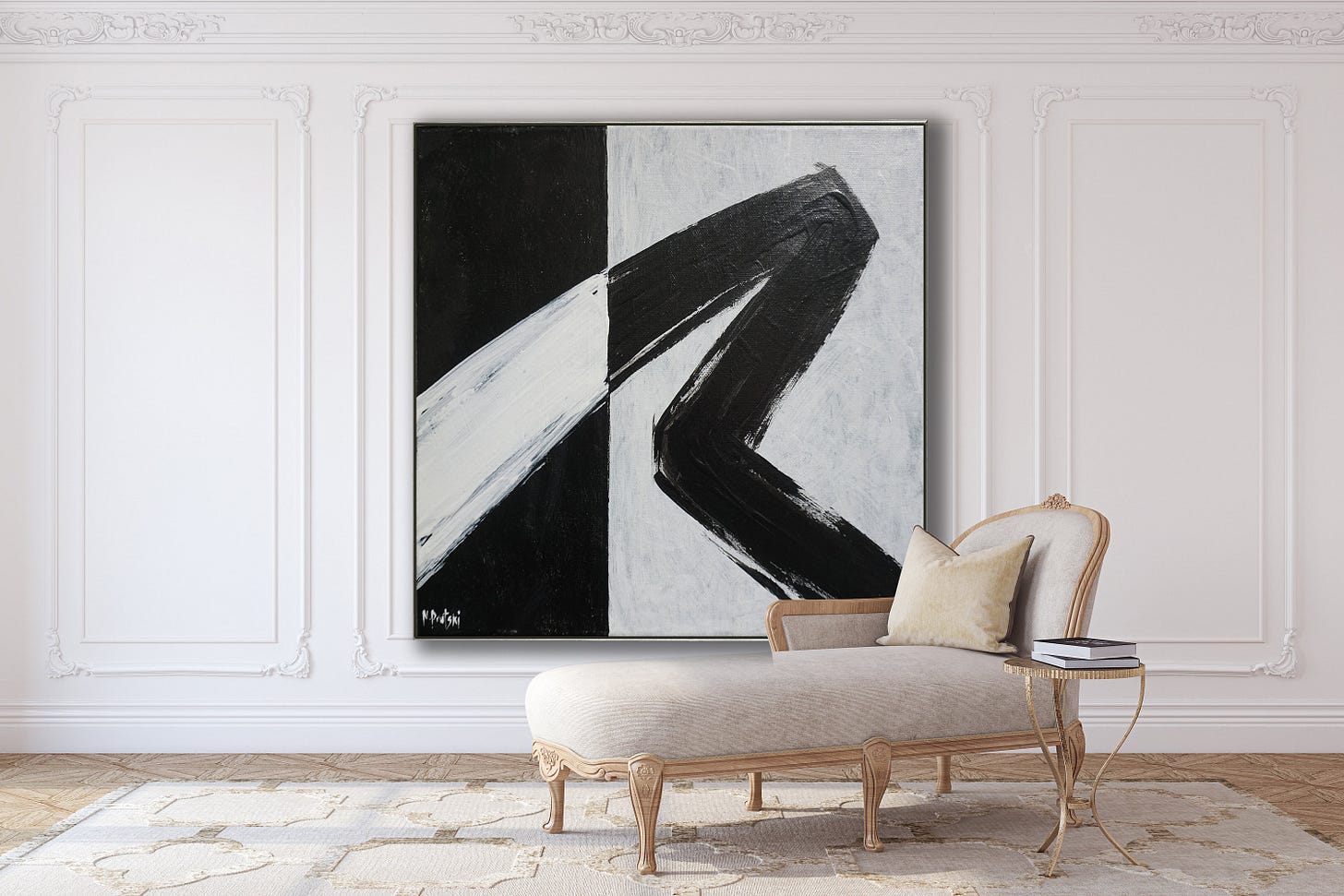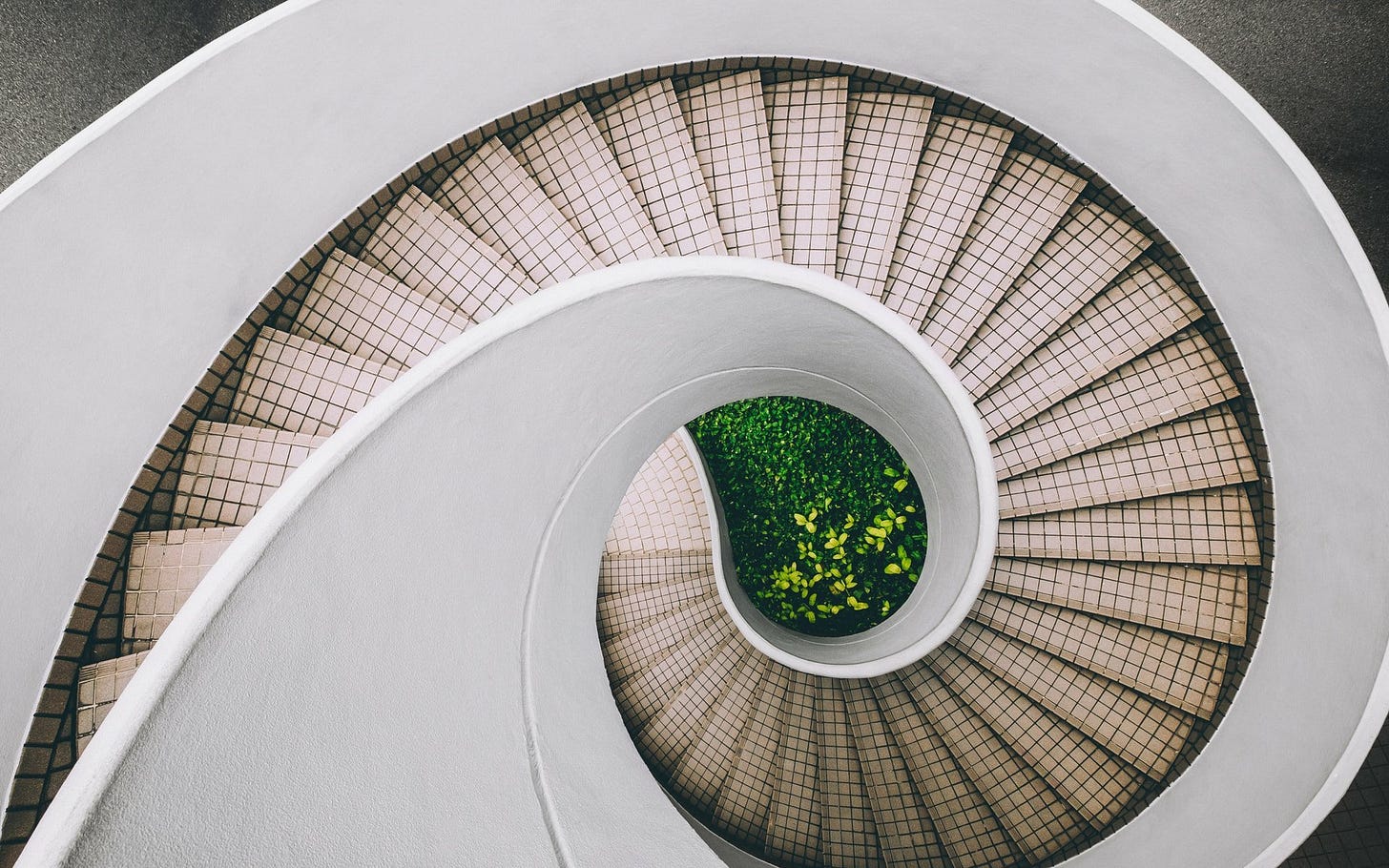The controversial truth about designer taste
Are designers born with good taste or is it cultivated?
Here's what you'll learn:
Subjectivity or taste?
The role of taste
Individual taste or design outcomes?
and much more…
Let’s dive in…
Design, like any form of art, is subjective(ish). However, the notion of "designer taste" has long been a topic of debate within the creative industry. Some argue that it is an essential aspect of expertise and aesthetics, while others view it as a veil of elitism.
In episode 23 of our Podcast, Mitchell spoke about taste, and more importantly, he shares with you how to develop a great design sensibility, aka your taste, in 4 simple steps. If you have not yet listened to it, I highly recommend you do so as it will be very helpful.
So, is taste cultivated or are you born with it?
The crux of this controversy lies in understanding the nature of designer taste—whether it is rooted in subjective preferences or if there are objective principles that define it.
What one designer considers to be "good taste" may be considered "bad taste" by another. This can lead to a lot of debate and discussion within the design community, and it can be difficult to come to a consensus on what constitutes "good" design.
The subjective nature of designer taste
Design, like any art form, is subjective( to a certain extent. Personal tastes, experiences, and cultural influences shape an individual's perception of what is visually appealing or aesthetically pleasing. Each designer brings their unique background and perspective to the table, resulting in a diverse range of design approaches and styles.
Subjectivity allows for creative expression, allowing designers to push boundaries, experiment, and challenge established norms. It encourages individuality and fosters a design landscape that reflects the richness and diversity of human experiences.
However, subjectivity also brings forth challenges in reaching a consensus on what constitutes "good" design.
Subjectivity or taste. How to spot the difference?
Subjectivity and taste are closely intertwined when it comes to design. While subjectivity refers to individual preferences and opinions, taste relates to one's ability to discern and appreciate aesthetics. Distinguishing between subjectivity and taste can be challenging, but there are ways to spot the difference.
👉 Subjectivity in design is rooted in personal preferences and biases. It reflects the unique perspectives, experiences, and cultural backgrounds of individuals.
👉 Taste goes beyond subjective preferences. It involves a deeper understanding of design principles, an appreciation for craftsmanship, and an ability to recognize well-executed design.
Ok, but how can you spot the difference between subjectivity and taste?
Context: Subjectivity is often influenced by personal contexts, such as individual experiences, cultural background, and emotional associations. Taste, on the other hand, takes into account broader design principles and objective criteria like functionality, usability, and user satisfaction.
Knowledge and expertise: Taste is developed through knowledge and expertise in design. Designers with refined taste have a deeper understanding of design principles, art history, and the elements of composition. Subjectivity, however, may be based more on personal preferences and limited exposure.
Critical analysis: Taste involves the ability to critically analyze and evaluate design choices, considering factors like balance, proportion, color harmony, typography, and user experience. Subjectivity is driven more by personal likes and dislikes without necessarily considering these objective elements.
Consistency and growth: Taste tends to be consistent and evolves over time with learning and exposure to different design styles. Subjectivity can be more variable and influenced by fleeting trends or personal moods.
It's important to note that subjectivity and taste are not mutually exclusive. Designers should have their own subjective preferences while also possessing refined tastes based on objective design principles. Striking a balance between personal expression and a deeper understanding of design can lead to successful and impactful design outcomes.
Designers should strive to develop their taste by actively seeking diverse design experiences, expanding their knowledge, and critically analyzing their own work and that of others. By doing so, they can navigate the complexities of subjectivity and taste, creating designs that resonate with a broader audience while staying true to their own creative vision.
The role of taste in design
Taste plays a crucial role in design, serving as a guiding force in decision-making processes. It encompasses a designer's intuitive sense of what works harmoniously, from color choices and typography to layout and composition. While taste is subjective, it is not arbitrary. It is informed by an individual's knowledge, skills, and understanding of design principles. (👈 this right here is important)
Designers develop their taste through continuous learning, exposure to various artistic expressions, and practice. They refine their sensibilities, honing their ability to discern what resonates with them and their intended audience. Taste acts as a compass, guiding designers in making choices that align with their aesthetic preferences and design goals.
Objective criteria and measurable impact:
While taste is subjective, the outcomes and impact of design can be assessed based on objective criteria. Design solutions are not solely judged by personal preferences but also by their ability to achieve specific goals, fulfill user needs, and deliver desired results. Usability, functionality, and user satisfaction are some of the objective factors that determine the success of a design.
Designers need to balance their individual taste with these objective principles, ensuring their work effectively communicates with the intended audience. By applying fundamental design principles, designers can create work that reflects their personal style while meeting the needs of users and achieving the desired outcomes.
Design principles
When designer taste becomes a rigid standard, it can lead to a dangerous homogenization of design. If all designers adhere to a singular aesthetic, the creative industry risks becoming stagnant and repetitive.
While we consider designer taste, design principles provide a framework for effective communication and user experience. Balancing individual taste with these objective principles can result in successful and impactful design outcomes. By understanding and applying fundamental design principles, designers can create work that not only reflects their personal style but also effectively communicates with the intended audience.
Applying fundamental design principles. This is the most important part. If you want to break the rules, you must first understand them.
My design decisions are based on my personal taste, design principles, and career experience. Everything is connected and every one of these affects the other.
How can you develop your own sense of taste?
Ultimately, whether you are born with good taste or whether it is something you cultivate is up to you. Developing a great design taste is a journey that requires exposure, practice, and a keen eye for aesthetics. Some designers will need to work on their taste more than others. Because, let’s face it, not all designers have excellent taste 😬.
But how do you know when a design is truly good or bad?
Consider this. You as a designer just finished your work:
✅ Woah, I nailed this design. I fucking love it! Everyone on Twitter loves it.
6 months later:
❌Hmmm. This design sucks. Why did I choose this font and color choices? Did I just do this for likes?
The truth is it takes years
Most people have a pretty good idea of what they like, but actually creating work that’s consistently praised by those in and outside the design community takes many years of practice.
It's a fundamental principle of growth and progress. As you accumulate experience, akin to honing your skills in a game or sport, revisiting previously conquered territory reveals how much more equipped you are to tackle the challenges at hand. It's an opportunity to surpass your previous accomplishments, pushing yourself to new heights and creating work that surpasses anything you've done before.
Get off the internet
Seriously. Step outside and embrace the world around you. Visit a museum, capture moments through photography, and immerse yourself in the wisdom of real books nestled within the walls of an actual library. Inspiration knows no bounds, extending far beyond the confines of what your peers share on Behance or Dribbble. Seek out these alternative sources.
Immerse yourself in design
Analyze and deconstruct
Seek feedback and learn from others
Practice, experiment, and iterate
Just like fine wines. The more you expose yourself, the better your pallet becomes. Wine drinkers did not start off with a $100 bottle of Brunello, they probably started off with a $10 bottle. The more they tasted wines and exposed themselves, their taste and experiences improved over time.
So… Is it as subjective as many people say it is?
Let’s explore this further. How can you actually get better or develop your taste?
Here are my two cents
To me, the taste is taste and is more subjective than anything else. It's worth noting that not all designers will end up with great taste, as taste is inherently subjective and varies among individuals. Harsh, I know but it is the reality of things.
However, by actively nurturing their abilities and continuously learning, designers can enhance their understanding of design principles, broaden their perspectives, and refine their own unique sense of taste.
The development of taste in design is:
✅ A combination of natural inclination
✅ Exposure to diverse influences, and
✅ A commitment to continuous growth.
It is through this ongoing process of nurturing their abilities that designers can evolve and refine their taste, leading to more impactful and aesthetically pleasing design outcomes.
The effectiveness of a design solution can be measured by its ability to achieve specific goals, fulfill user needs, and deliver desired results. While taste may vary among individuals, the impact and success of a design can be assessed based on objective criteria, such as usability, functionality, and user satisfaction.
So be patient with yourself, and keep looking, admiring, learning, and working. Close that gap between what you strive for and what you can do, through practice.
Until next time,
Pascal & Mitchell
Hey, Mitchell & Pascal here! Thanks for checking out this week’s free edition of the Shaping Design newsletter. We strive to send you the best tips and our very own unique perspective each week. Subscribe to get each article!
If you enjoy this newsletter, we’d love to know!






